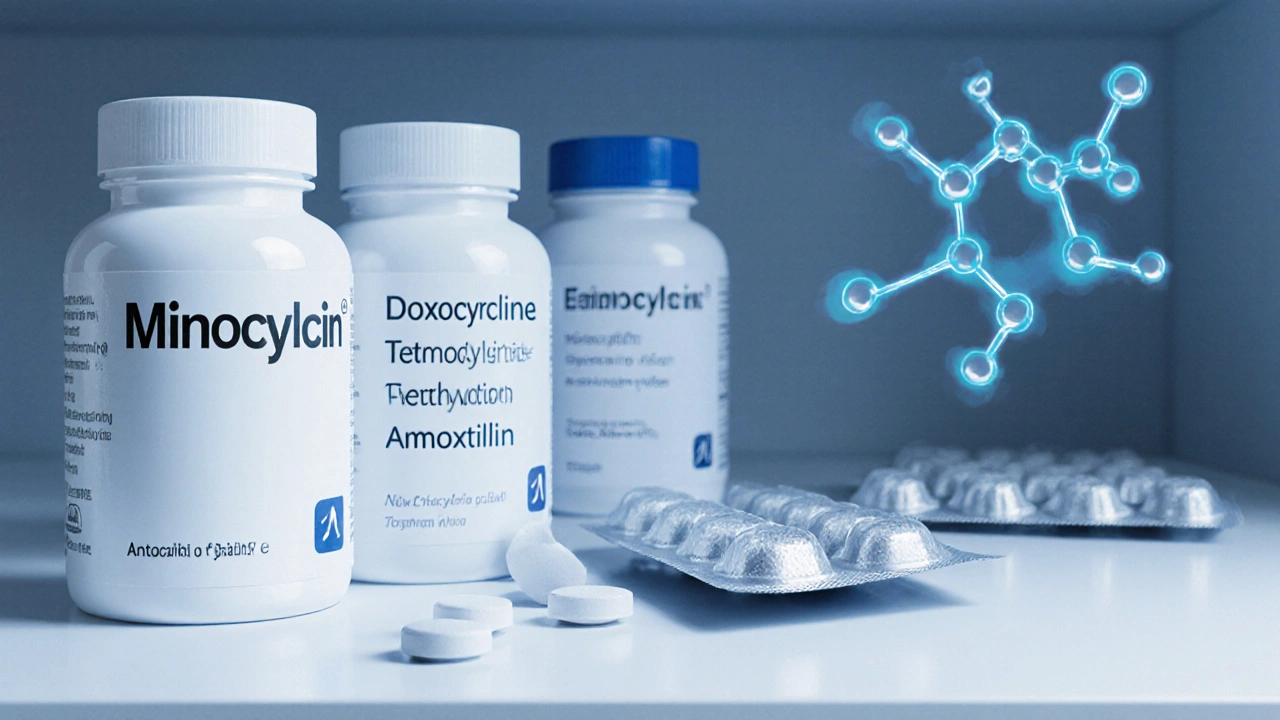Minocin: What It Is, How It Works, and What Alternatives You Should Know
When you hear Minocin, a brand name for the antibiotic minocycline, commonly prescribed for acne and bacterial infections. Also known as minocycline, it's one of the tetracycline-class antibiotics that has been used for decades to fight stubborn skin infections and inflammatory conditions. Unlike some antibiotics that just kill bacteria, Minocin goes deeper—it reduces inflammation in the skin and can even affect how your immune system responds to acne-causing microbes. That’s why it’s still on the shelf even as newer drugs arrive.
Minocin doesn’t work the same way as other antibiotics like Cleocin (clindamycin), which targets acne bacteria on the surface, or tetracycline, the older, less potent version of the same drug family. Minocin is more lipophilic, meaning it penetrates skin and tissues better. This makes it stronger for deep cystic acne, but also increases the risk of side effects like dizziness, stomach upset, and rare but serious issues like autoimmune reactions or skin discoloration.
Many people start Minocin because their dermatologist says it’s the next step after topical treatments fail. But not everyone tolerates it. Some switch to doxycycline, a close relative that’s cheaper and often better tolerated, while others move to non-antibiotic options like spironolactone or isotretinoin if their acne is hormonal or severe. If you’re on Minocin and feel off—like you’re dizzy after standing up, or your skin is darker in patches—you’re not imagining it. These are real, documented effects.
Minocin also pops up in other contexts. It’s sometimes used off-label for rosacea, Lyme disease, or even rheumatoid arthritis because of its anti-inflammatory properties. But that’s not always the best move. The rise of antibiotic resistance means doctors are more cautious now. That’s why you’ll see posts here comparing Minocin to alternatives like tetracycline, clarithromycin, or even non-antibiotic acne treatments. You’ll find real stories from people who tried it, what worked, what didn’t, and when to walk away.
What you’ll find below isn’t just a list of articles. It’s a practical guide to understanding where Minocin fits in today’s treatment landscape. You’ll see how it stacks up against other antibiotics for acne, what the latest research says about long-term use, and which patients should avoid it entirely. Whether you’re considering starting it, already on it, or looking for a safer option, these posts give you the facts without the fluff.

Minocin (Minocycline) vs. Alternatives: Benefits, Drawbacks & Best Uses
A detailed comparison of Minocin (minocycline) with common antibiotics, covering uses, side effects, cost, interactions, and when to choose each option.
October 6 2025